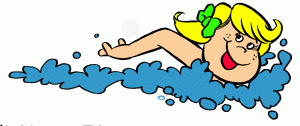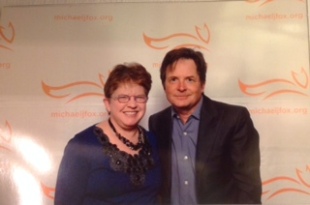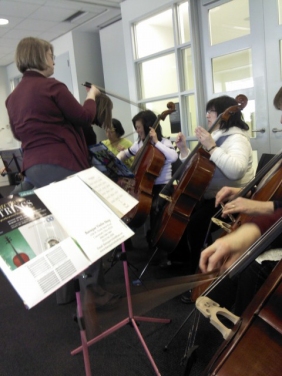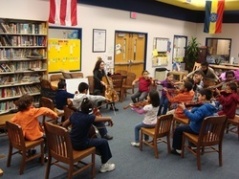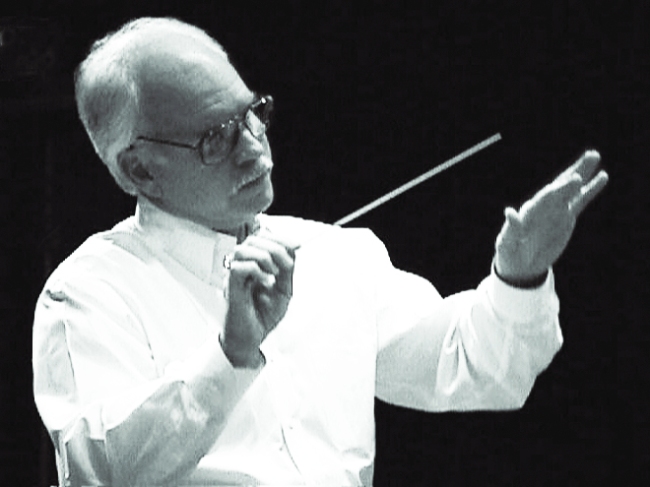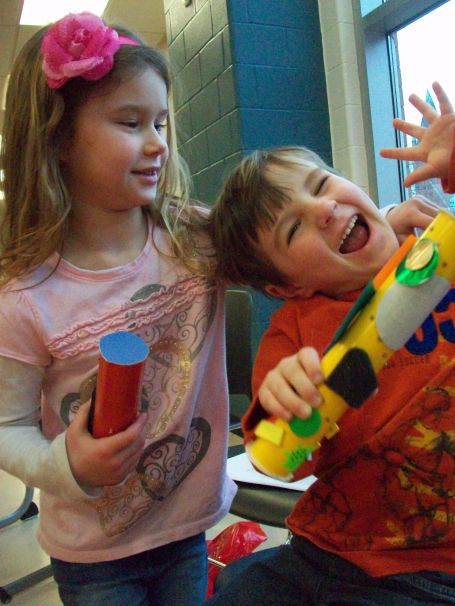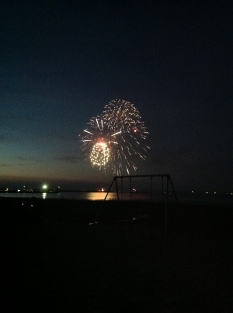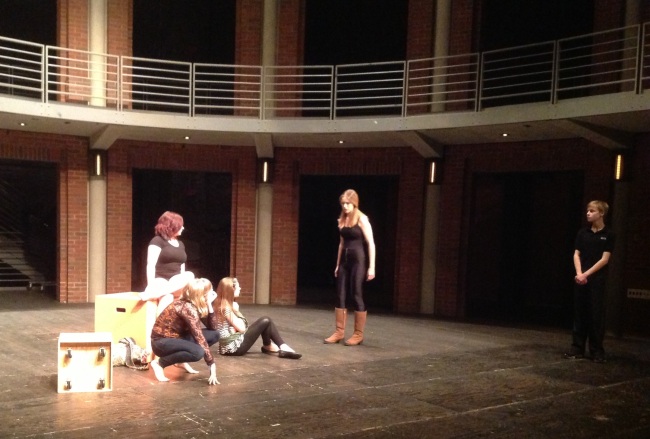In the past seven years I have broken my arm which caused temporary numbness in my fingers and then a torn ligament in my right hand which has permanently changed my hand position. And playing the oboe suddenly got hard and not so fun. Since then I have made adjustments and compromises in order to continue to play. Now I have Parkinson’s Disease to deal with. There is some slowness in my reaction time especially when I play fast passages. So I have a bevy of issues that are getting in the way of my playing. Enter Jennifer Roig-Francoli and her Art of Freedom intensive workshop: http://www.artofFreedom.me
This is not cheap, but I learned so much in that one day last month. I learned about the essential skills of the Alexander Technique. Frederic Alexander was an Australian actor whose prime was in the waning years of the 19th century. He began to have serious voice problems and consequently, being the curious man that he was, he watched his profile for hours and hours when he recognized something: When he deliberately told himself to stop and not talk, his jaw would relax. He then could carry on with his vocal mechanism behaving. It’s the mind body connection. And that is a very simple and crude description. The key is a concrete verbal closure on a bad habit and choosing the appropriate way.
It all begins with posture. I went to Jennifer expecting her to focus on my hands which is where my problem is but we spent a lot of time on posture. I found out that once our body is aligned as it should be (and most of us don’t have proper posture), our mind has a direct pathway to our body. Once that pathway is open and functioning, many of our tightness and control issues disappear. But it takes a long time and practice, just like with your instrument. My fingers and hand position already are improving and when I realize I am slouching or gripping or overwhelmed, I have tools to handle it. I can stop, verbalize and begin again. I am eager to learn more and practice more. Knowing that you can control your body and its movements is a powerful tool. Here are some websites to learn more about the Alexander Technique:
http://www.Alexandertechnique.com
There is no cure for Parkinson’s Disease. If I’m one of the lucky ones, the disease will manifest itself gently and gradually so I can adapt to the changes this insidious disease will bring. My main line of attack on PD is to exercise, so I try to stay as active as possible. This includes swimming at the university pool at least three mornings a week before work. I love to swim and the monotony of uninterrupted swimming, back and forth lap after lap allows plenty of time to think. And I do.
Here’s what I discovered during one morning swim: The swim team practices at the same time us “recreational” swimmers do. They take up all the lanes but one. The rest of us share the “slow” lane. That’s nothing new to me. I am always the one never moving from the right lane on the highway.So I am swimming the tortoise (aka the crawl very slowly) and in the next lane I hear 1’36” and realize one of the swim team members swam the lap at least twice as fast as me. Left behind? Not really, I thought. We’re in the same water, doing the same stroke, receiving the same benefits but at different tempi. There, I made the connection to music. Some of the most satisfying musical experiences I’ve witnessed or been part of, is the mixing of ages, abilities, interests and sounds. It’s the great equalizer. When beginners are placed next to seasoned musicians, they perceive themselves to sound like the experts and it does wonders for their playing. AT our recitals, it’s great to hear the whole scope of music development – from the beginner who can only play a three note melody to the talented student preparing to go off to college for a professional music career.
We’re all in the water together. There’s no demarcation line where the water works only for the athletically gifted – the water flows around all of us, beginners and speed demons, those who can swim for an hour straight and those who can only swim a few laps. And that’s what music is about. There is something for everyone, and there are ways to bring musicians all together despite age and talent barriers. In our New Horizons Orchestra, our college student assistants perform difficult melodic lines and us older beginners accompany them. And we all sound great! It’s a blast and a great motivational tool. When I look over in the other lane, it reminds me that I can move up my speed a few notches and push myself a little harder.
April is Parkinson’s Disease Month. During this month, all of us (patients, family members, caregivers and other support people) affected by this degenerative, debilitating disease are encouraged to speak up and tell others about this disease and collectively work to find a cure. Approximately one in every 100 people over the age of 60 are diagnosed with this disease; and about 60,000 are diagnosed with Parkinson’s every year. But many people are diagnosed at a younger age. I am one of them; and I am a professional musician.
Fortunately music is my avocation and not how I earn a living; but I have been playing oboe for 45 years and my identification as a musician is a big part of who I am. Parkinson’s Disease at this early stage plays itself out in my music making more than in my professional or social life. I was diagnosed one year ago with the disease, but as I have come to learn, PD lives in your body for a long time before it manifests itself. Silently it eats away at the brain cells that produce dopamine which is necessary for controlling movement of your body. By the time the tremors and shaking of the limbs occur, up to 80% of the dopamine your body produces can be lost. Like most PD patients, a tremor in my right hand started me on this journey.
But having PD is more than just involuntary shaking. There can be a loss of cognitive abilities and that scares all of us with PD. There are effective medications that can control shaking, at least in the early stages, and an active exercise schedule can be very effective in your overall health and keeping proactive with the advancement of symptoms. But this is what I found out about PD through my music:
1. I get tired. On orchestra days, I wake up early, go swimming, work a full day and then go to a 2.5 hour rehearsal. It is exhausting. My body gets tired easier. Or is that because I am getting older? So often I question whether an ache or moment of forgetfullness is my PD accelerating or is it just because I am 58? On nights when I don’t have rehearsal, I don’t have the energy to take out my oboe and make reeds and practice. I prefer to do things that are relaxing and stress reducing.
2. I can’t follow fast passages in my music like I have been able to all my life. I simply can’t accurately process lines or repeated ostinati, arpeggios and other tricky passages at presto tempi. My brain doesn’t analyze them as fast and my fingers are slowing down because of that. I have always been the musician who loves to play fast pieces. Now I savor slow melodic lines and concentrate on tone and control. Unfortunately, that doesn’t work with playing in an orchestra. You play what the director chooses. I have dealt with this by having an assistant first oboist join our orchestra. But the revelation that what came naturally for so long is now beyond your ability is sobering.
Despite these changes in my ability as a musician, the act of making music is critical to who I am. I continue to play what I can and playing such a difficult instrument as the oboe presents itself with numerous challenges to the most able minded performer. I have now taken up the cello through our New Horizons string orchestra and the opportunity to make music with no pressure or expectation is invigorating. I am playing just because I want to and that is rewarding.
Finally, please help the million of us in this country who have PD. There are many fine organizations locally and nationally who are working tirelessly for both a cure and ways to reduce symptoms of this disease. I participate in our local Parkinson’s Wellness Chapter (www.parkinsonswellness.org) and nationally through the Michael J. Fox Foundation (www.michaeljfox.org). If you want to support the Foundation, feel free to go to my webpage (http://www2.michaeljfox.org/goto/amysapronsandmore where you can get a handmade apron, totebag or other items that I am sewing to raise money for the Foundation. Last year I raised over $4,000 and had the wonderful opportunity to meet Michael J. Fox two weeks ago in New York City at a Foundation event. There are over 1,000 of us that are part of Team Fox, raising money in our own way but with one objective – to find a cure. There is also a serious need for volunteers for trials – both people with PD and especially those without – to function as control groups. The website has comprehensive information for you to get started. I have participated in one research project so far. Together we can do so much to fight this disease.
Why should kids be the only ones who can learn to play an instrument? Why can’t we share the joys, challenges and satisfaction that students experience with us adults? That’s what the New Horizons movement is all about. Providing the opportunity for adults to learn to play an instrument with their peers in a relaxed and supportive environment. I am learning to play cello, a dream that I have had for many years. Apparently, I’m not the only adult who has had this dream. We have 7 our of 15 members learning the cello!
From the first class, it became clear that this was work – but really fun work. And what I love most is there are no expectations on my playing from anyone. More and more, it is becoming more difficult to keep up my level of oboe playing that I have had for the last 35 years.
Back to why we learn to play music: I visited MYCincinnati the other day. It is an El Sistemo inspired program that offers free string education to students in an urban neighborhood in Cincinnati. These kids are true musicians. They perform with gusto, take their playing seriously and aren’t afraid to tackle Tchaikovsky, Verdi and their counterparts. Kudos to Laura Jeckel who had the vision, sweat factor and faith in the community to create a safe place for children to learn music, a tool that can transform their lives.
So we learn music for different reasons. We adults are seeking hidden dreams, forgotten skills and a way to express our lived experience. Kids just think it’s cool. Well, so do adults!
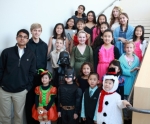 How many times do profound moments come from the thoughts of our students? I was reading an essay for a scholarship application in which the young lady, when asked why music is important to her said, “she likes to see people smile when they listen to her play the piano.”
How many times do profound moments come from the thoughts of our students? I was reading an essay for a scholarship application in which the young lady, when asked why music is important to her said, “she likes to see people smile when they listen to her play the piano.”
Isn’t this enough? We don’t have enough smiles in our world. We’re told to smile when our picture is being taken and if we inadvertently see our image in a window, we usually see a frown. But when music is part of the environment, the climate indeed changes. Our terrific high school jazz combo recently performed at a political function. Invited guests would walk in the doors with a rather stressed and uncomfortable look on their faces and as soon as they heard the jazz music, their faces would soften and a smile would appear! I love seeing the smiles of parents as they watch their child perform in their first recital.
I wonder what could be more important and significant than making another person smile? If our students do nothing more than make people smile, what’s wrong with that? Of course, behind those smiles there’s a lot of hard work and learning going on. There might even be tears of frustration. But when our young musicians play for others, it translates to smiles. Our world could use a lot more smiles, don’t you think?
Here in the Cincinnati Community Orchestra, our director Dr. Gerry Doan, designs a variety of programs. For the first concert this season, the emphasis was on the music of Brahms, and therefore, a fairly narrow perspective on the extensive breadth of classical music. However, if you are a fan of Brahms or just plain romantic music, a concert like that is up your alley. From a performer’s perspective, the opportunity to perform two lengthy works by the same composer, helps us to learn and reinforce performance style of a particular composer. When you are reading the music, you recognize a similar phrase or pattern that may have occurred in the other work and you can apply your knowledge to the music.
If we compare musical concerts to salad bars (I know, wierd, but that’s how my brain operates) this would be analagous to the person who loves to make one large green salad from the salad bar. She may put a lot of ingredients onto that salad, but it is still one salad.Then there are those customers who prefer the salad bar with about 50 different choices of salads. Count me in on that one. There’s tossed salads, potatoe salads, vegetable salads, jello salads, chicken salad, and so on. The plate isn’t large enough because you want a taste of everyone!
OK, if you are that kind of a salad bar consumer, you will love our upcoming concert! Dr. Doan has programmed a wide variety of orchestral selections from classical through music written near the close of the 20th century. Yet, Dr. Doan has cleverly tied all of the pieces together in a theme of “flying.” And some of the music flys by way fast!
Playing several pieces of contrasting style and approach is tricky. All of the musicians have to be nimble and ready to change styles. Playing John Williams soundtracks requires a different approach than playing a Rossini overture. But wait a minute! Both works serve essentially the same purpose: they enhance a visual experience.
Deciding what to perform on a concert requires a lot of thought and past experience. Know that any CCO concert you attend will be a concert that originated with many hours of thought by the director followed with many hours of personal practice and orchestral rehearsal before we present it to the public. We hope you fly with us on Saturday December 7!
Musicians have their preferences when it comes to music. All of us in the Cincinnati Community Orchestra have our favorite composers and pieces of music. When the music for each concert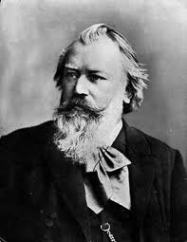 is announced, musicians search for the juicy parts that they love to play. As an oboist, I automatically search for those soulful, languid yet exotic melodies: think Scheherazade. None of those in this concert.
is announced, musicians search for the juicy parts that they love to play. As an oboist, I automatically search for those soulful, languid yet exotic melodies: think Scheherazade. None of those in this concert.
We’ll be performing the Symphony #4, and the Double Concerto for Violin and Cello on Saturday, October 19.So many of our musicians are pumped up for this concert. Playing not one, but two works by Brahms is the ultimate for our musicians. I decided that I had better get with the program and see what it is about the music of Johannes Brahms that draws and inspries so many musicians (and listeners). I asked musicians – why do you like Brahms’ music so much? Answers: “it is so lush, the melodies are so beautiful, and it is easy to listen to.”
Surprise for me! I have always looked at his music as long and busy without going anywhere. So during our rehearsals I have been listening to what is happening around me (note to budding musicians out there – you should be doing this from day one…). I’m realizing that melodies are what makes up his music. I have at least three or four in my head all the time from this music. So as I am listening to what’s around me, while playing my part (musicians have to be multi-taskers) I’m hearing a melody tossed around the orchestra but almost always present. Occasionally Brahms will let the melody fade away and let supporting rhythms and harmonies take front stage, but never for long.
And this is the kicker for me: his music is long! Be prepared for long first movements. I never could figure out how composers could fill up an hour with a bunch of music notes. My preference is for shorter works that I know I have the stamina to process. But thanks to another musician friend of mine, the secret was revealed: people love to listen to beautiful melodies. Melodies are far easier to digest than rhythmic patterns for most listeners. And that is why Brahms is so beloved by musicians and audiences alike. We all love a good melody, like we love a good glass of wine or a good book. And I now have a whole different perspective on Brahms. Even when I don’t play a pretty melody, I can hear one coming from all sides of me!
See you on October 19 at 7:30 p.m.!
Church of the Saviour
United Methodist
8005 Pfeiffer Road
Cincinnati, OH 45242
September always means a new year for anyone involved in education – and that means most of us- parents, kids, teachers, tax payers, shop owners, yes all of us are involved in education in some degree and way. Educating our children is a responsibility of all of us in our society.
And a well rounded education for a child includes arts education. Unfortunately the cycle continues of reducing arts programs in schools. Local schools still may offer arts classes, but changes in scheduling often prohibit students from taking arts classes. There is a relationship between those students in the arts and students who are in the top percentage of their class. Inevitably, these students have to choose between an arts class or a college AP class.
How unfair for the student! As a teacher, administrator, student, or taxpayer, if you think the arts are important to our society, advocate for this. It doesn’t take a lot of work. Most of all is to be informed about what is happening in your school district. There are also great sites like the Americans for the Arts- http://www.artsusa.org/get_involved/advocate.asp – that offer strong evidence on the value of the arts such as students with high levels of arts involvement are less likely to drop out of school.
As a director of a community arts school, our role is to support and expand the learning that most often begins in the public school program. Early exposure in younger grades to singing, movement and music making can spark a lifetime of musical enjoyment.
Anyone intimately involved in the arts has a responsibility to advocate for access to the arts for everyone. I can’t imagine a life without singing, dancing or beautiful images. Make this a resolution for your new year!
I’ve been on vacation for the last week plus. My doctor has told me that I need to relieve stress so on this vacation I tried very hard not to mix work with pleasure. Yet there are moments that we experience as artists that just happen. I’m calling them disappearing moments of art.
Nature is unequivocally the finest artist there is. We spent most of our time in the woods of northern Michigan and Canada. Out of pure quiet comes a short rhythmic phrase from a bird unseen, one that composers may try to replicate, but it will never be the same. The sound of accumulating waves on the lake at tide create a hypnotic and soothing rhythm.
Another disappearing moment of art I discovered on this trip were the fireworks on July 4. As I watched the fireworks off the beaches of Mackinaw Bay, I experienced the rhythm, structure and patterns of these fleeting moments of art. I don’t know who makes fireworks and how they work, but to me they are works of art.
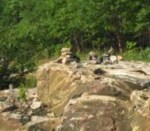
Another fleeting moment of art: we were driving the pristine Canadian highways, which clearly were created from huge boulders of rocks that were cut to create the highways. On top of the boulders there were little rock sculptures. Who put them there? Why? A big mystery, but such a delight to observe as the miles went by.
Disappearing moments of art. They are everywhere, and they make our world just a little bit brighter and magical.
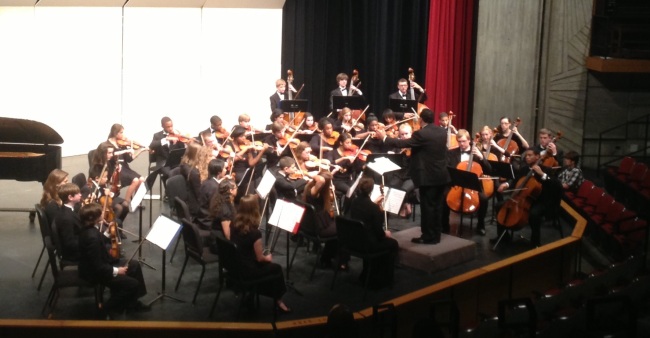 One of the reasons I have the world’s best job is that I work with amazing and talented faculty. Amazing and talented students seem to find these teachers and when the two are combined, watch out. That’s what we have experienced these past two weeks in our new high school “immersion” program. 175 students, most from around our community, but about 45 from out of state auditioned and were accepted into our programs in chamber music, string orchestra, jazz, voice, acting, ballet and musical theatre. This was our first year in which we offered all our high school programs simultaneously. We wanted to immerse these students in their specific arts area, but also to be exposed and learn from each other. Well, we learned that will take some time. But we’re on to something. Attending rehearsals and concerts, I was struck by what motivated young students can achieve in one or two weeks. These students are performing professional works and act like it’s a piece of cake! There is a lot of work behind making a program like this work. But the payoff is so worth it. Amazing and talented faculty and amazing and talented students make our lives fuller and this world a little bit brighter.
One of the reasons I have the world’s best job is that I work with amazing and talented faculty. Amazing and talented students seem to find these teachers and when the two are combined, watch out. That’s what we have experienced these past two weeks in our new high school “immersion” program. 175 students, most from around our community, but about 45 from out of state auditioned and were accepted into our programs in chamber music, string orchestra, jazz, voice, acting, ballet and musical theatre. This was our first year in which we offered all our high school programs simultaneously. We wanted to immerse these students in their specific arts area, but also to be exposed and learn from each other. Well, we learned that will take some time. But we’re on to something. Attending rehearsals and concerts, I was struck by what motivated young students can achieve in one or two weeks. These students are performing professional works and act like it’s a piece of cake! There is a lot of work behind making a program like this work. But the payoff is so worth it. Amazing and talented faculty and amazing and talented students make our lives fuller and this world a little bit brighter.

